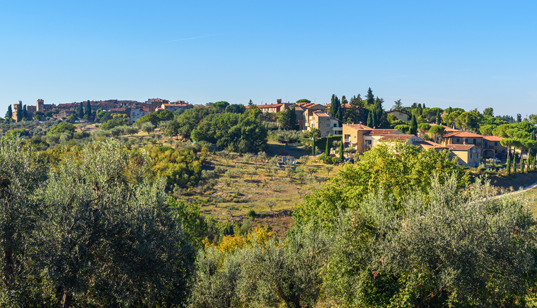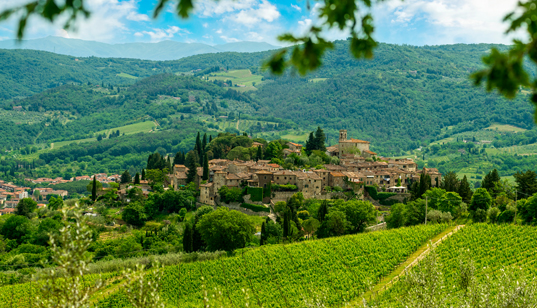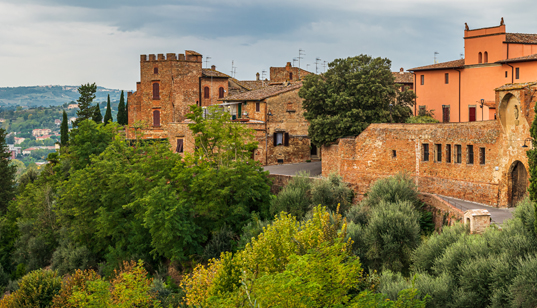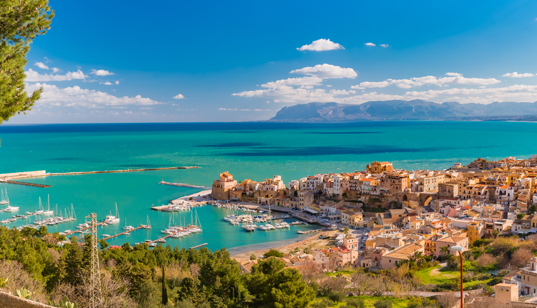From Tuscany comes yet another fairytale-like place, both architecturally as well as for its stunning landscape. Indeed, Montalcino is an enchanted medieval village whose geographical position has it gazing out towards the incredible beauty of the renowned Tuscan hills.
Situated in the province of Siena, Montalcino dominates the valleys of Val D'Asso, Valle dell'Ombrone and Val d'Arbia from its hilltop perch in Val d’Orcia. It's nestled amongst breathtaking hills and surrounded by four kilometres of medieval wall, thirteen fortified towers and six gates built in the 1100s to defend the village from attack. Following Siena's surrender to Florence in 1555, the fortress of Montalcino became the last stronghold of the Republic of Siena.
It seems as if nothing has changed since then and the village, with its majestic castle towering above the surrounding greenery, welcomes visitors and immediately transports them into a timeless atmosphere. Montalcino offers the possibility to head out on beautiful walks in search of spellbinding views. Here it's obligatory to take your time strolling around the village's narrow alleyways and to gaze in wonderment at the plethora of medieval architecture seemingly untouched by time.
Montalcino's ancient centre, enclosed within the wall, winds its way along the main street, via Matteotti, and on to piazza del Popolo, the village's medieval heart. Between the piazza and via Matteotti stands the Palazzo dei Priori, which was built by the Sienese and bears the marble emblems of the various podestà (chief magistrates). Within the ground floor portico one can admire the stunning statue of Cosimo I, created by Giovanni Berti. The Duomo di Montalcino (Montalcino Cathedral) is also well worth a visit: a bare structure built between 1818 and 1832 that stands majestic and elegant, and is a magnificent example of neoclassical architecture.
Local cuisine, traditional dishes, interesting facts
The history of Montalcino is inextricably linked with the production of Brunello, one of Italy's finest wines that's renowned and loved throughout the world. It takes its name from its characteristic dark brown colour (bruno in Italian), tending to brown. It was Ferruccio Biondi Santi's idea in 1888 that led to the creation of Brunello, when he decided, for the first time, to eliminate certain grape varieties from the traditional recipe for Chianti and use only Sangiovese. Brunello, to be enjoyed at its very best, must be aged for at least five years, two of which should be in a wooden barrel. Other local delights include honey, extra virgin olive oil, cured meats and cheeses, a shining example of which is the pecorino di Pienza, which should be enjoyed in one of the many traditional restaurants and wine bars dotted around the village centre.
Where to eat enjoying a bottle
of Acqua San Benedetto
Ristorante Castiglion del Bosco Hotel, Montalcino (Siena)
















